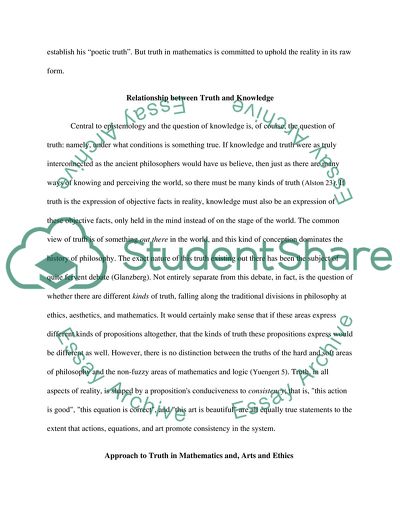Cite this document
(Relationship between Truth and Knowledge Case Study Example | Topics and Well Written Essays - 1250 words, n.d.)
Relationship between Truth and Knowledge Case Study Example | Topics and Well Written Essays - 1250 words. https://studentshare.org/philosophy/1727845-to-what-extent-is-truth-different-in-mathematics-the-arts-and-ethics
Relationship between Truth and Knowledge Case Study Example | Topics and Well Written Essays - 1250 words. https://studentshare.org/philosophy/1727845-to-what-extent-is-truth-different-in-mathematics-the-arts-and-ethics
(Relationship Between Truth and Knowledge Case Study Example | Topics and Well Written Essays - 1250 Words)
Relationship Between Truth and Knowledge Case Study Example | Topics and Well Written Essays - 1250 Words. https://studentshare.org/philosophy/1727845-to-what-extent-is-truth-different-in-mathematics-the-arts-and-ethics.
Relationship Between Truth and Knowledge Case Study Example | Topics and Well Written Essays - 1250 Words. https://studentshare.org/philosophy/1727845-to-what-extent-is-truth-different-in-mathematics-the-arts-and-ethics.
“Relationship Between Truth and Knowledge Case Study Example | Topics and Well Written Essays - 1250 Words”. https://studentshare.org/philosophy/1727845-to-what-extent-is-truth-different-in-mathematics-the-arts-and-ethics.


